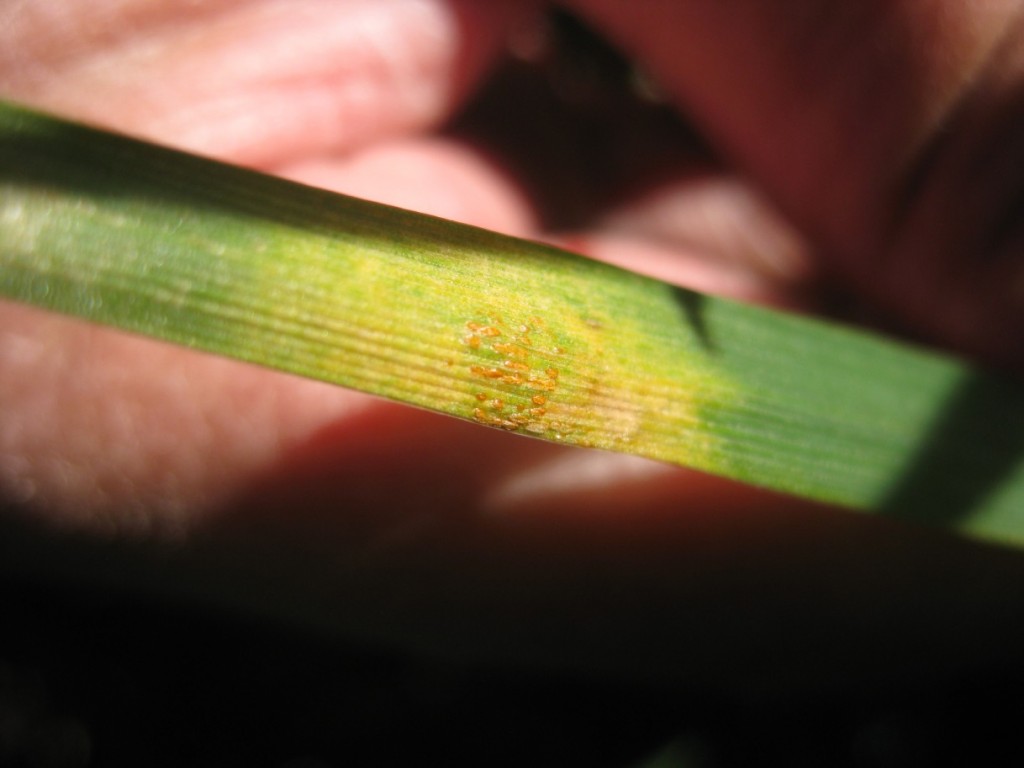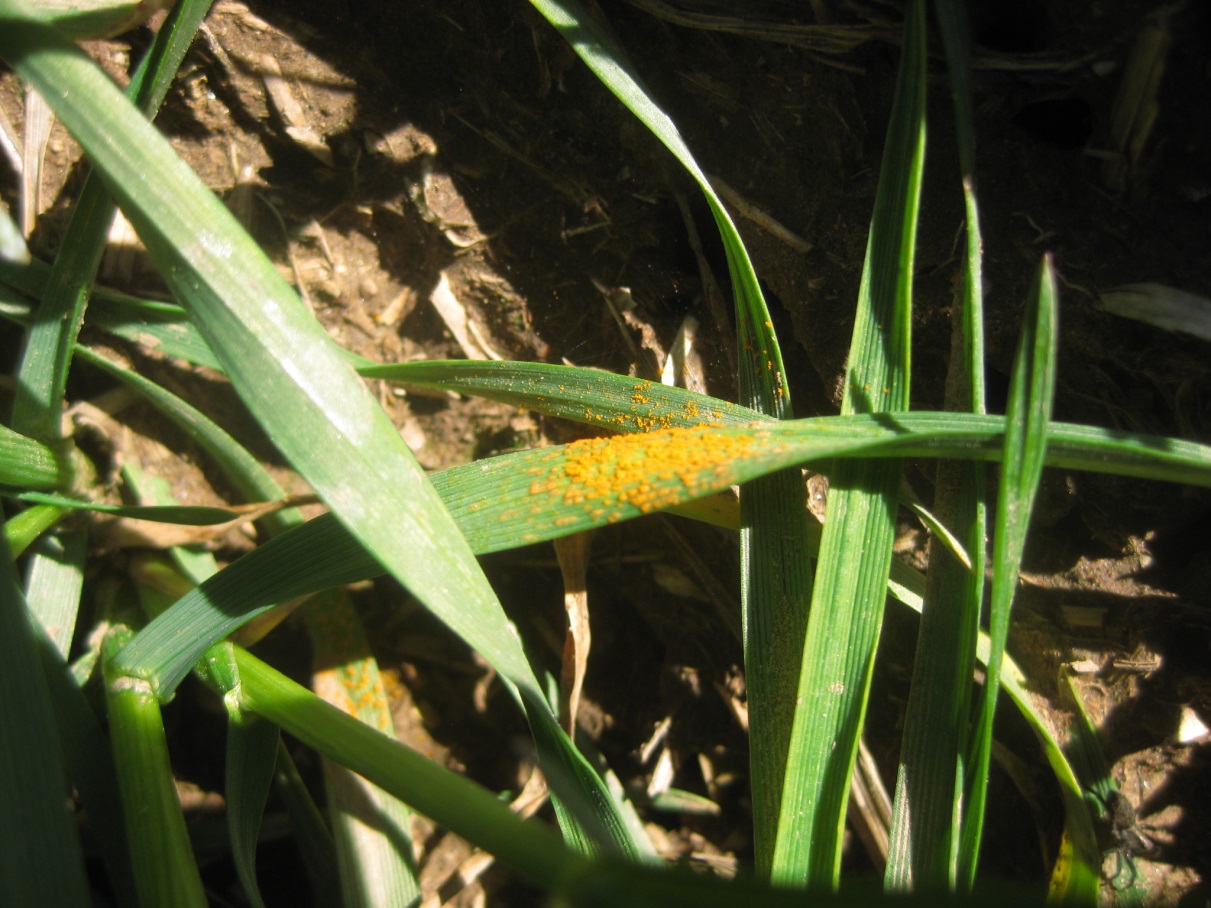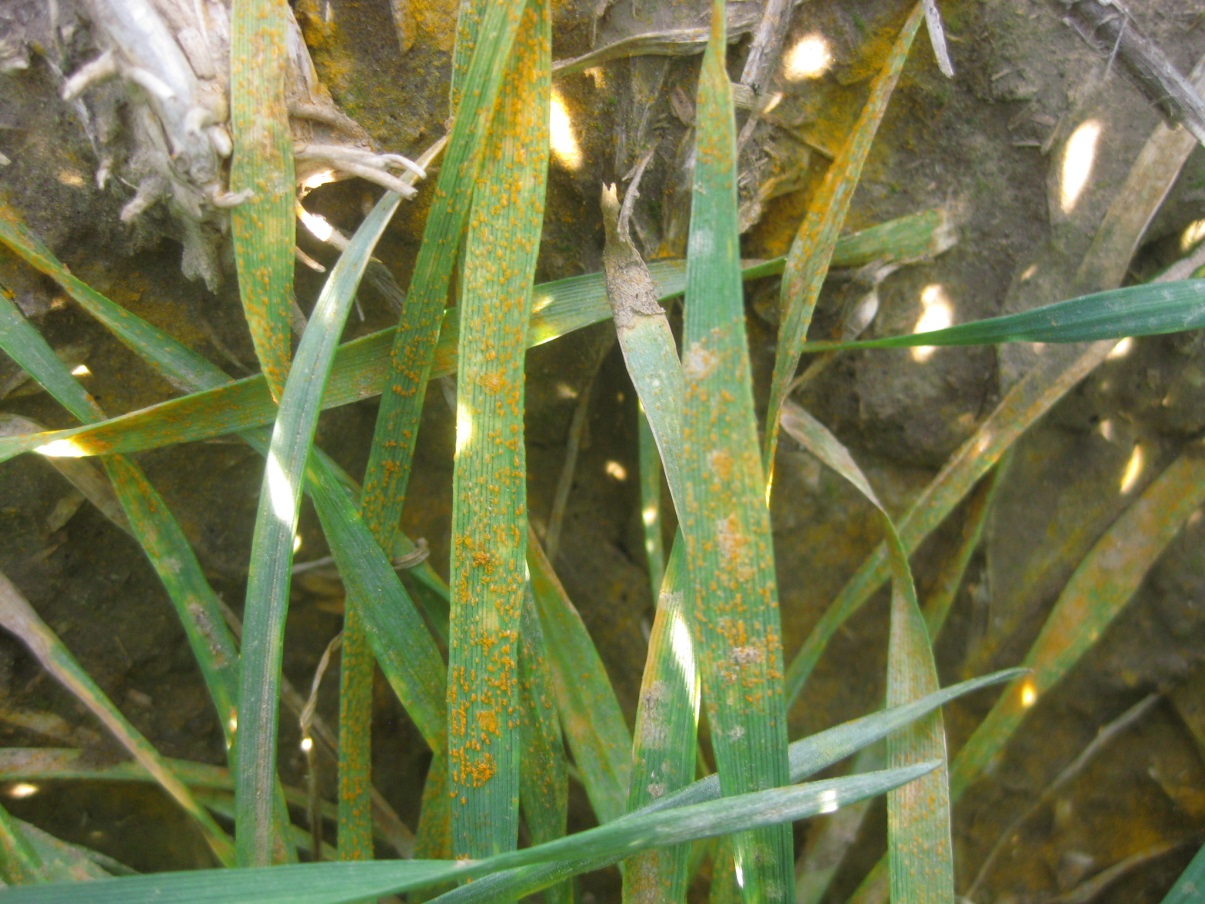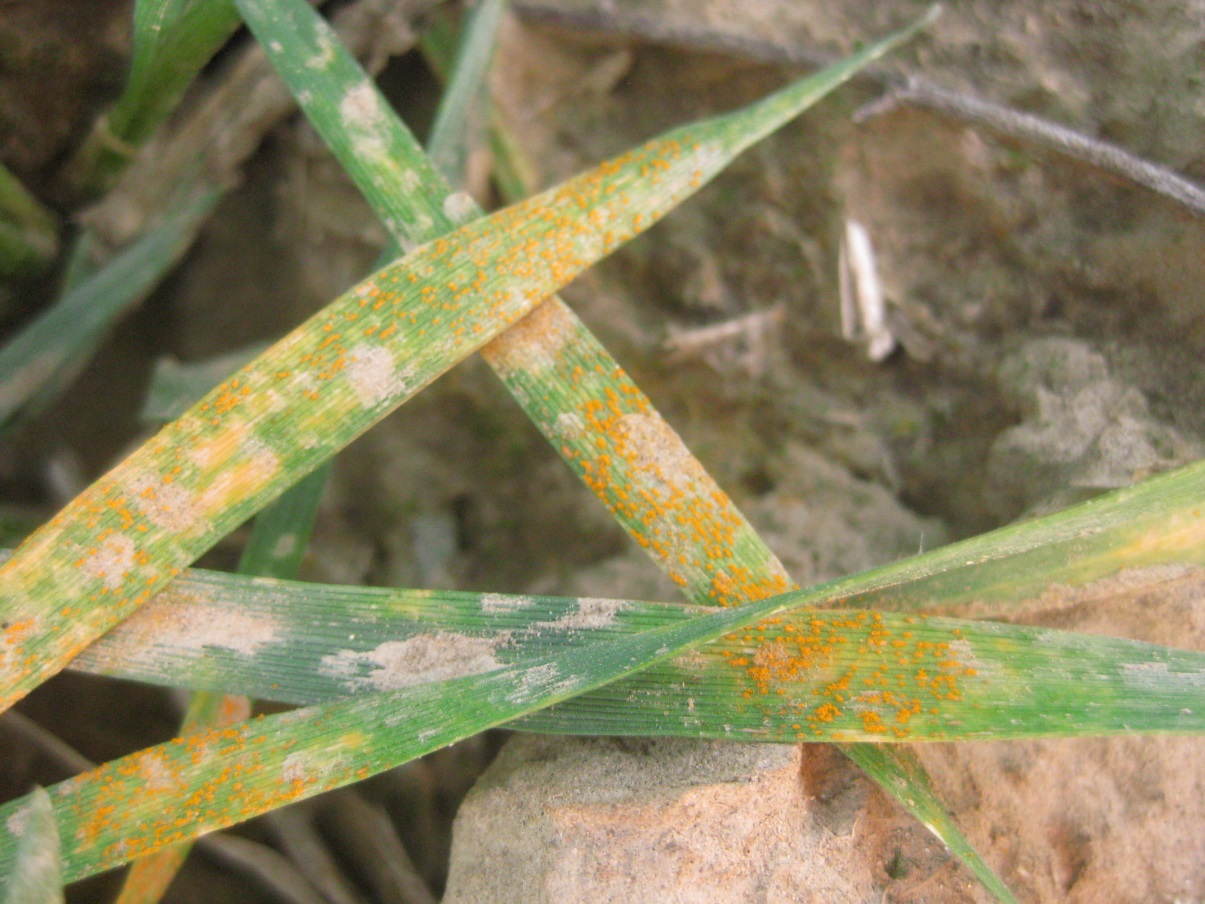Xianming Chen
Wheat stripe rust in Washington
Yesterday, we were checking wheat fields in Whitman, Lincoln, Adams, and Franklin counties in eastern Washington. Winter wheat ranged from Feekes 2 to 6. With the good moisture in March, most wheat fields looked good. In Whitman County, stripe rust was not observed in all fields, except one field (Figure 1) close to the Adams border. In contrast, stripe rust was much easy to find in Lincoln, Adams, and Franklin counties (Figures 2-4), with stripe rust reaching 5% prevalence in some fields. Rust was mostly on the low leaves from infections in the last fall, but in some fields, rust showed up on upper leaves from infections after the winter. Many fields in Lincoln, Adams, and Franklin counties have been sprayed with fungicides, together with herbicides and fertilizers.
As the weather has started worming up these days and good moisture in the soil, a quick development of stripe rust is expected in eastern Washington in the next few weeks. Our recommendations are the same as in the March 4 update. If a susceptible or moderately susceptible winter wheat variety (ratings 5 to 9 on the Buyers’ Guide) is planted or active stripe rust was observed in fields grown with varieties rated 1 to 4, consider using fungicide at the time of herbicide application. Fungicides are not recommended for fields planted with highly resistant varieties (ratings 1 and 2) and rust cannot be found. For the fields that have been sprayed with fungicides, check the fields three to four weeks after the first fungicide application. If active stripe rust starts developing again, consider a second fungicide application. High-temperature adult-plant (HTAP) resistance usually starts working when temperatures above 65 F in days and over 50 F at nights, and when plants reach Feekes stage 6. Varieties have a moderate level of HTAP resistance rated 4 and 5 and a low level of HTAP resistance (ratings 6 and 7) may need fungicide application in a late stage under this year’s high disease pressure. Spring wheat varieties with a high level of resistance stripe rust resistance (ratings 1 to 3) are recommended for planting. Fields planted with spring wheat varieties of other ratings may need an early application of fungicides at the time of herbicide application, depending upon the rust pressure and weather conditions at that time.
As always, stripe rust developed on every plant of winter wheat entries in our experimental field at Mount Vernon in western Washington by the middle of March. In this area, fungicide application is needed every year when susceptible and moderately susceptible varieties are planted.
Stripe rust in the country
So far, stripe rust has been reported in Texas, Oregon, Louisiana, Arkansas, Oklahoma, Washington, Colorado, Kansas, Mississippi, California (heard from a colleague), and Virginia (much earlier than normal). This is an early and severe year of stripe rust countrywide. Fungicide application has been used to control the disease in the above states.
 Figure 1. Stripe rust observed in a winter wheat field in northwestern Whitman County.
Figure 1. Stripe rust observed in a winter wheat field in northwestern Whitman County.
 Figure 2. Stripe rust observed in a field near Harrington in Lincoln County.
Figure 2. Stripe rust observed in a field near Harrington in Lincoln County.
 Figure 3. Stripe rust observed in a field near Ritzville in Adams County.
Figure 3. Stripe rust observed in a field near Ritzville in Adams County.
 Figure 4. Stripe rust observed in a field in the Connell area of Franklin County.
Figure 4. Stripe rust observed in a field in the Connell area of Franklin County.